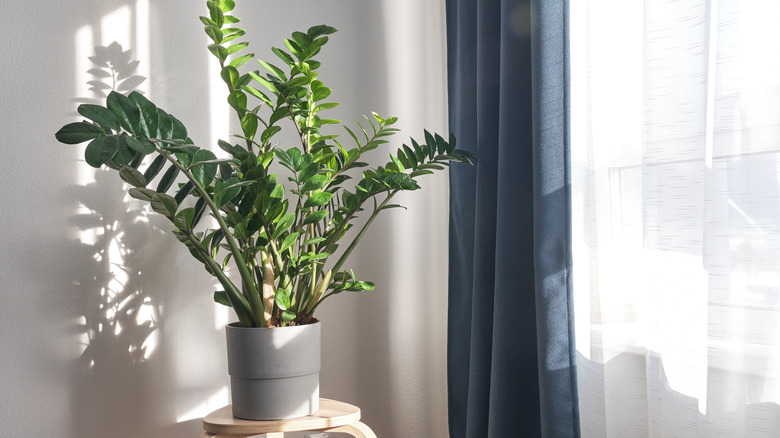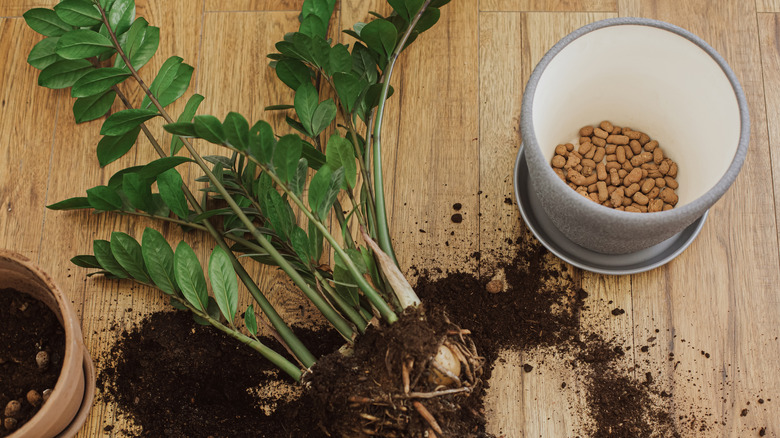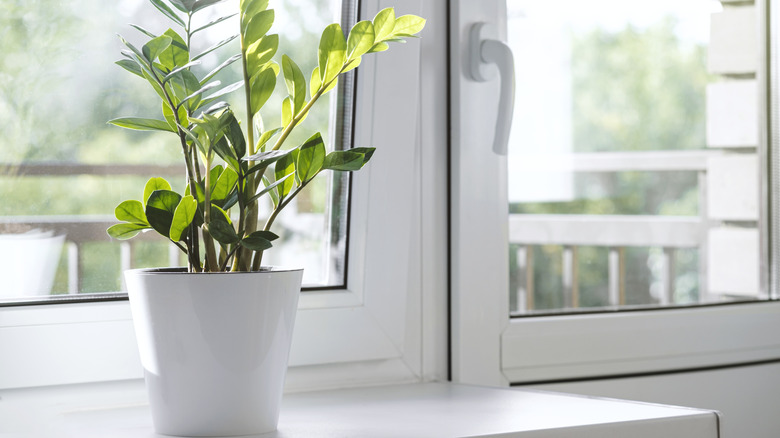How To Repot Your ZZ Plant Like A Garden Expert
Behold the ZZ plant, an indoor foliage extraordinaire with an entourage of aliases like aroid palm, Zanzibar gem, Zuzu plant, and emerald palm. But contrary to a typical assumption, the abbreviation ZZ doesn't stand for Zuzu. Instead, it represents this marvel's botanical name: Zamioculcas zamiifolia, known for their unhurried growth, adaptability, and low-maintenance demeanor.
As you venture into the art of repotting a ZZ plant, the truth unravels that it's more about strategy than a green thumb. For instance, you could transfer your green companion to a larger pot to enhance growth or merely refresh the soil in its current residence to limit growth. And as they say, the devil is in the details — everything counts, from selecting the right ZZ plant repotting soil to regulating watering frequency and optimizing lighting conditions.
The best time of the year to repot a ZZ plant would be in spring or summer. This timeline gives your botanical friend ample time to acclimate to its new home before surrendering to winter dormancy. But seasonal timing isn't the only compass here. Nature might intervene prematurely, illuminating one of several clues that your ZZ craves repotting. Watch out for stunted growth, leaves paling, rogue roots breaking free from drainage holes or causing pot fractures, and water dashing through without quenching parched soil.
Steps to repot a ZZ plant like a seasoned gardener
The art of repotting a ZZ plant finds its roots in the quest for a suitable pot. It's a delicate balance, much like Goldilocks' mythical meal — not too large or small, but just right. Ideally, the new pot's diameter should be 1 to 2 inches larger. Misjudge this, and the fresh soil in your oversized pot will not drain efficiently, jeopardizing your ZZ's life. Water your plant beforehand just enough to easily pop it out from its old residence. Then, wiggle the ZZ plant out, cautious to prevent leaf or stem breakage. Those pesky clumps of unyielding soil can be disarmed with a small knife.
Unfold the next act by conducting a detailed audit of the roots and dispose of any that are dead, fungus-stricken, or rotten. Shake off the soil from the roots, and untangle coiled-up roots using your fingers. Afterward, treat a third of your new pot to a fresh potting mix and lay your plant on it. Keeping the root ball a few inches below the potting container's brim helps prevent impromptu waterfalls during subsequent watering. To secure the transplant in its new home, surround it with additional soil, then compact gently. Be sure to water your newly potted plant every two weeks or so. Plunge a finger about 3 inches into the soil and hydrate when it feels parched. Finally, give your ZZ plant its VIP spot in a well-lit yet sheltered part of your home.
Precautions and alternatives for repotting a ZZ plant
Hygiene and protection take center stage in the ZZ plant-repotting theater. Dirt-riddled pots bear the conceivable weight of loathsome microorganisms eager to assail your ZZ transplant. A quick cleanup with a soap solution, followed by a rinse with clean water, is enough to banish soil and grime from your pot. But the skirmish isn't won yet — armor yourself with gloves as a frontline defense against the ZZ plant's irritative sap.
As for the best ZZ plant repotting soil, look no further than a well-draining mix featuring wood chips, pumice, or perlite. But what if the plant is on a growth spree, yet the available space is too tight to fit a larger pot? It's time to divide your verdant friend. Begin with unpotting the plant as advised earlier, then slice the rhizomes (underground stems) with a knife.
Now, onto how to care for your ZZ plant. Dirty leaves, stripped of their luster, crave a cleanup for better sunlight reception. Bear in mind, though, that direct sunlight could damage the leaves. In addition, the ZZ sanctuary needs to remain out of reach from children and pets as the plant is toxic when ingested, per Houseplant 411. Citrus peels, vinegar solution, or coffee grounds will help keep any curious feline detectives at a distance.


